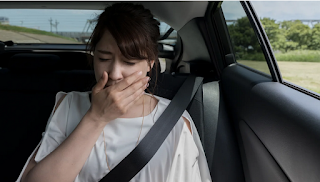In this comprehensive guide, we'll delve into the intricacies of motion sickness prevention, offering you practical solutions to ensure a comfortable and enjoyable travel experience. Motion sickness can strike anyone, anywhere, and understanding how to combat it is crucial. Whether you're a seasoned traveler or a novice, our goal is to equip you with the knowledge and strategies to outrank motion sickness and make your journeys more pleasurable.
What is Motion Sickness?
Motion sickness is a common condition that arises when there is a disconnect between what your eyes see and what your inner ear senses. This dissonance can lead to symptoms like nausea, dizziness, and vomiting. Whether you're traveling by car, plane, boat, or even an amusement park ride, motion sickness can be an unwelcome companion.
Understanding the Science
The Vestibular System
To tackle motion sickness effectively, it's important to comprehend the science behind it. The human body's vestibular system plays a pivotal role. This system is responsible for maintaining balance and spatial orientation. When your brain receives mixed signals, motion sickness can occur.
Role of Visual Input
Visual input is another significant factor. Staring at a fixed point, like the horizon, can help reduce motion sickness. We suggest having a focal point, such as a distant mountain or a fixed point on the dashboard if you're in a vehicle.
Motion Sickness Prevention Techniques
Now, let's explore the strategies to prevent motion sickness:
1. Choose the Right Seat
The location of your seat can significantly impact your susceptibility to motion sickness. Opt for a seat where you'll experience the least motion. In a car, this is typically the front passenger seat, while on a plane, choose a seat over the wings.
2. Fresh Air
Good ventilation and fresh air can help alleviate motion sickness. Open a window or use air vents to ensure a constant flow of fresh air.
3. Ginger
Ginger has been a natural remedy for motion sickness for centuries. Whether in the form of ginger candy, tea, or capsules, it can provide relief.
4. Medication
Over-the-counter or prescription medications can be effective in preventing motion sickness. Consult with a healthcare professional to determine the right option for you.
5. Acupressure Bands
Acupressure bands work by applying pressure to specific points on your wrist. They are a non-invasive and drug-free way to combat motion sickness.
Overcoming Motion Sickness: Your Travel Companion
Packing Essentials
When embarking on a journey, pack a "motion sickness kit" to be well-prepared. Include ginger-based products, acupressure bands, and your chosen medication.
Mind Over Matter
Stay relaxed and focused during your journey. Avoid reading or using electronic devices, as they can exacerbate motion sickness. Engage in conversation or listen to soothing music instead.
Stay Hydrated
Dehydration can worsen motion sickness symptoms. Ensure you stay well-hydrated throughout your travels, but avoid large meals before your journey.
Conclusion
In conclusion, motion sickness is a common issue, but with the right knowledge and prevention strategies, it can be effectively managed. By choosing the correct seat, using natural remedies like ginger, and staying well-prepared, you can enjoy motion sickness-free travels. This comprehensive guide equips you with the tools to ensure your next journey is comfortable and enjoyable.
Remember that while these strategies can help prevent motion sickness, it's advisable to consult with a healthcare professional if you have severe or persistent symptoms.

Post a Comment for "Motion Sickness Prevention: Your Ultimate Guide"